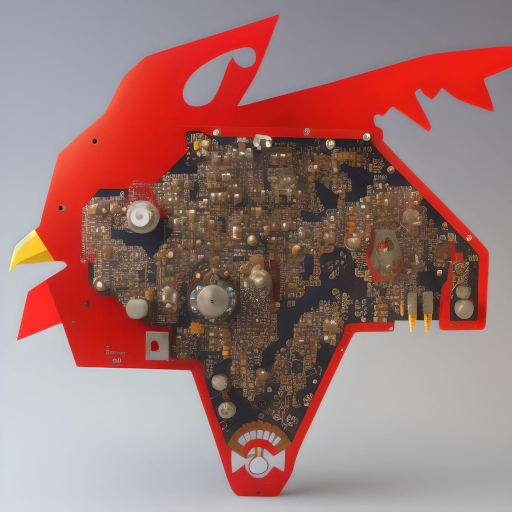
Half the time it would just be a Sysco product list.

Or the units of measurement would be “half of big pot”

Why would they? It’s takes work with no return. It’s giving something of value (theoretically) for nothing in return, not even good relations for the restaurant since they are now gone.

I worked at a pizza place that shut down, and it never even occurred to anyone. For one thing the owner was obviously stressed out worrying about a bunch of other things, both in the restaurant and in her personal life, and you’d be surprised how much of the food you get at restaurants is really just purchased from a company like Cisco and warmed up for you. We did make the actual pizza from scratch though, and that place had the best crust of any pizza place I’ve ever been too. The problem there was that the recipe was very simple. Just flour, water, oil, salt, sugar, and yeast. That’s it. The trick is the exact ratio, and a proper pizza oven. The oven a recipe can’t help with, and for reasons I don’t understand scaling down recipes, especially in baking, does not produce the same result. A recipe that starts with a 50 pound bag of flour is useless to you, and if you just try to divide all the weights by 100 the end result just isn’t good. All you really know is that you can make good pizza dough with flour, water, oil, salt, sugar, and yeast. That is not exactly shocking news.

The issue with scaling in baking recipes is often that home bakers are measuring by volume and not mass. Any commercial baker is going to go by mass because with ingredients like flour the amount that’s in 1 cup can vary wildly based on how firmly packed into the cup it is. There are also issues with how long you need to rest 10 pounds of dough vs 1 to ensure it properly hydrolyzes and the fact that pizza dough in pro pizza shops often undergoes a sort of accidental ferment just by nature of the fact that it’s made in large batches then stored.

That, but also certain things like yeast don’t scale in normal ratios. You gotta use logs and powers and whatever them fancy math boys do.

Oh balls if we’re gonna get into the math for how many billions of yeast cells we’re pitching and time/population curves and all that mess we’re gonna need to take this over to the homebrewing community and talk to someone smarter than me. I just let my rises go until the volume of the loaf has doubled.

That is a problem, and also as someone else pointed out the yeast is another, but also in my experience water is as well. I don’t know if it just dries out differently because of the change the in mass to surface area ratio or what, but for whatever reason you have to change the ratio of flour to water when you change the scale of a recipe. It can even make a difference just to be at a different altitude. Baking is a weirdly complex mix of chemistry and even sometimes biology. The more I learn about it, the more surprised I am that it ever even works.

Its an issue with hydrolizing, which is to say the rate at which the flour absorbs the water and begins the process of gluten development.
Stovetop cooking is the intersection of organic chemistry and performance art. Baking is the intersection of organic chemistry and witchcraft.

Are you aware of the metric system?

even in the metric system, measuring by mass is better than volume and most home bakers don’t do it

You can and actually do every measurement of a recipe expressed in metric by mass, especially when it comes to bread and pastry and even more for fine pastry.
Even for liquids it is extremely easy to convert volume into mass because 1ml = 1g (for water), which facilitates converting any volume of any liquid into mass.
Even eggs, butter or even olive oil can be easily measured by weight.
So, even if you were to get a recipe expressed in tons for each ingredient, it would be possible to convert it to a homemade recipe by just converting to grams and weigh the required ingredients.

The problem with measuring by volume isn’t that math is hard. The problem is that you can get surprisingly inconsistent amounts of things. Tiny differences in how you measure can make a huge difference in how much air you have mixed into your dry ingredients. Measuring ingredients by weight doesn’t have that problem.

You made me go and review why I had intervened in the thread.
Yes, you are correct. Volume is an extremely imprecise measure for dry ingredients and it was because of that I commented as I did, as the discussion was as commercial baking/cooking revolved around large batches, measured by weight, while family cooking/baking revolves around measurements by volume.
But you get hard pressed to have that problem in recipes expressed in metric, even if we went and tried our best to make matters as complicated as possible and measured liquids by mass.
That was why a I replied as I did.

That’s a fair point, but I think you’re overestimating how difficult it is to convert units in less rational measurement systems. People who’ve used metric their whole lives seem to have it stuck in their heads that it’s some kind of herculean task to look up a couple numbers and plug them into a calculator and then write that number down for your recipe. If it was as hard as you seem to think it is even America would have changed over by now. Metric is better, but it’s not that much better.

a company like Cisco
Networking AND food? What more could you want

Yeah, I had a brainfart there. They’re pronounced the same, but the company I was actually thinking of is spelled Sysco.

and a proper pizza oven. The oven a recipe can’t help with
Fortunately, it sounds like pizza steels do a really impressive job replicating a good oven.

Tell me more about these pizza steels. I know of stone, but a quick google shows me that steels exist, but why steel over stone?

In short, they can hold a lot more heat than the stones, mimicking the effect of professional pizza ovens.
So the idea is to cook a pizza in the shortest possible time in order to thoroughly cook the dough and outer layers, whilst leaving the ingredients with a delightful freshness. With a conventional oven the process takes much longer, tending to cook everything evenly, producing a drier pizza in which you don’t get that ‘brick oven effect.’
I’ve tried the stones myself, heating them on max heat for a whole hour beforehand. They can help a bit, but it’s still not the same. All that’s my take on the situation, anyway.
I checked the FV just now and I don’t see a pizza community here that goes in to this stuff. Unfortunately for now, you’ll have to visit the evil empire for more precise info.

pizzamaking.com is a great old style forum that has more info than the evil empire
I do wish there was an active community for it here too though

Thanks for the tip!

Yes and no. You can get amazing pizza just as good as a proper pizza oven with a pizza steel or a pizza stone if you know what you’re doing and have a good oven, but again there are subtle differences that make it so you can’t just replace one for a large pizza oven with no other adjustments and still get the exact same results.

I bet it’s also common/planned that they would just reopen another one somewhere else. Esp if it closed for bankruptcy, etc.

Because they’re busy going out of business, I’d imagine. It’s actually a pretty complicated process if you want to avoid a bunch of extra problems down the line. If publishing the recipes helped avoid some of those problems, they might do it. But they’re more likely trying to protect themselves from creditors and get their taxes sorted and final paychecks and selling inventory and equipment and real estate…

Depending on the restaurant and the bankruptcy proceedings, the recipes may be considered an asset that can be sold to recoup losses. Those assets only have value when they are secret.

Maybe they’re preserving the option to try again with a new restaurant?

Maybe the recipes just weren’t that good, which might have something to do with the restaurant closing.

In one case in my area, the recipes for their signature dishes died with the family matriarch. :(

My favorite Chinese place closed and I’ll never taste that delicious sauce again…

We’re still at Shoney’s!!!

Accountability I bet
